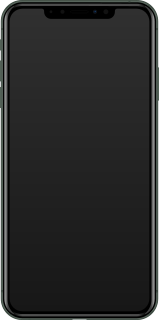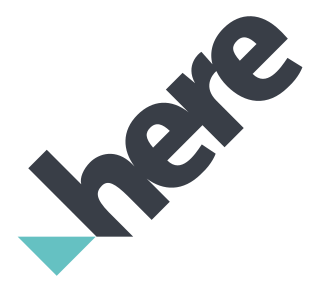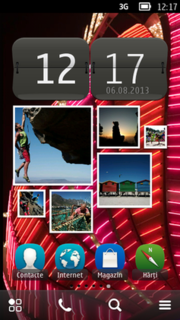This article is being considered for deletion in accordance with Wikipedia's deletion policy. Please share your thoughts on the matter at this article's deletion discussion page. |
iTyphoon is a mobile application that provides free typhoon updates to Filipinos and the world. [1] It was developed by Magno Edilberto R. Conag III, president and C.E.O. of Nueva Caceres Technology Solutions, Inc., together with his friend, David Michael V. Padua, owner of Typhoon2000.com. The application is used by residents of Naga, Camarines Sur, in the Philippines to receive typhoon alerts and is available for use globally. [2] iTyphoon is available for iOS, [3] Android, [4] Nokia [5] Series 40, and is planned for Windows Phone and Qt.

A smartphone is a mobile device that combines cellular and mobile computing functions into one unit. They are distinguished from feature phones by their stronger hardware capabilities and extensive mobile operating systems, which facilitate wider software, internet, and multimedia functionality, alongside core phone functions such as voice calls and text messaging. Smartphones typically contain a number of metal–oxide–semiconductor (MOS) integrated circuit (IC) chips, include various sensors that can be leveraged by their software, and support wireless communications protocols.

MSN is a web portal and related collection of Internet services and apps for Windows and mobile devices, provided by Microsoft and launched on August 24, 1995, the same release date as Windows 95.

Near-Field-Communication (NFC) is a set of communication protocols for communication between two electronic devices over a distance of 4 cm or less. NFC offers a low-speed connection with simple setup that can be used to bootstrap more-capable wireless connections.
WeatherBug is a brand owned by GroundTruth, based in New York City, that provides location-based advertising solutions to businesses. WeatherBug consists of a mobile app reporting live and forecast data on hyperlocal weather to consumer users.

The iPhone is a line of touchscreen-based smartphones designed and marketed by Apple Inc. that use Apple's iOS mobile operating system. The first-generation iPhone was announced by Apple co-founder Steve Jobs on January 9, 2007. Since then Apple has annually released new iPhone models and iOS updates. As of November 1, 2018, more than 2.2 billion iPhones had been sold.

Android is a mobile operating system based on a modified version of the Linux kernel and other open source software, designed primarily for touchscreen mobile devices such as smartphones and tablets. Android is developed by a consortium of developers known as the Open Handset Alliance and commercially sponsored by Google. It was unveiled in November 2007, with the first commercial Android device launched in September 2008.
A mobile operating system is an [] system for mobile phones, tablets, smartwatches, 2-in-1 PCs, smart speaker, or other mobile devices. While computers such as typical laptops are 'mobile', the operating systems used on them are generally not considered mobile ones, as they were originally designed for desktop computers that historically did not have or need specific mobile features. This distinction is becoming blurred in some newer operating systems that are hybrids made for both uses.

Windows Phone (WP) is a discontinued family of mobile operating systems developed by Microsoft for smartphones as the replacement successor to Windows Mobile and Zune. Windows Phone featured a new user interface derived from Metro design language. Unlike Windows Mobile, it was primarily aimed at the consumer market rather than the enterprise market.

Here Technologies is a Netherlands-based company that provides mapping and location data and related services to individuals and companies. It is majority-owned by a consortium of German automotive companies, whilst other companies also own minority stakes. Its roots date back to U.S.-based Navteq in 1985, which was acquired by Finland-based Nokia in 2007. Here is currently based in The Netherlands.

Symbian is a discontinued mobile operating system (OS) and computing platform designed for smartphones. Symbian was originally developed as a Proprietary software OS for PDAs in 1998 by the Symbian Ltd. consortium. Symbian OS is a descendant of Psion's EPOC, and was released exclusively on ARM processors, although an unreleased x86 port existed. Symbian was used by many major mobile phone brands, like Samsung, Motorola, Sony Ericsson, and above all by Nokia. It was also prevalent in Japan by brands including Fujitsu, Sharp and Mitsubishi. As a pioneer that established the smartphone industry, it was the most popular smartphone OS on a worldwide average until the end of 2010—at a time when smartphones were in limited use—when it was overtaken by iOS and Android. It was notably not as popular in North America.

SPB Software, a division of Yandex, the leading Russian IT company which operates the largest search engine in Russia, develops mobile solutions for OEM mobile device manufacturers, mobile carriers, smartphone, tablet, and end users worldwide. On November 28, 2011 Bloomberg Businessweek reported that Yandex acquired SPB Software after its own initial public offering debuted on the NASDAQ as the fourth largest IPO for all of 2011. SPB Software's most popular solution, the SPB Shell 3D, has been described by The New York Times as an application that makes for a much more user-friendly phone. SPB Shell 3D utilizes SPB Software's SPB UI Engine, a cross-platform modular plugin for building hyper-realistic 3D interfaces on a variety of devices. Android Arena describes the SPB UI Engine as being written in native C++, meaning that it takes advantage of everything a chipset has to offer, sailing smooth at the default 60 frames per second, and making laggy performance a thing of the past. SPB also develops software running on Android, iOS, Symbian, bada, BlackBerry, Maemo, MeeGo, webOS, Windows Phone 7, and the Windows Mobile operating systems.

The Nokia N9 is a smartphone developed by Nokia, running on the Linux-based MeeGo "Harmattan" mobile operating system. Announced in June 2011 and released in September, it was the first and only device from Nokia with MeeGo, partly because of the company's alliance with Microsoft announced that year. It was initially released in three colors: black, cyan and magenta, before a white version was announced at Nokia World 2011.
A mobile application, also referred to as a mobile app or simply an app, is a computer program or software application designed to run on a mobile device such as a phone, tablet, or watch. Apps were originally intended for productivity assistance such as email, calendar, and contact databases, but the public demand for apps caused rapid expansion into other areas such as mobile games, factory automation, GPS and location-based services, order-tracking, and ticket purchases, so that there are now millions of apps available. Apps are generally downloaded from application distribution platforms which are operated by the owner of the mobile operating system, such as the App Store (iOS) or Google Play Store. Some apps are free, and others have a price, with the profit being split between the application's creator and the distribution platform. Mobile applications often stand in contrast to desktop applications which are designed to run on desktop computers, and web applications which run in mobile web browsers rather than directly on the mobile device.
Rakuten Viber, or simply Viber, is a cross-platform voice over IP (VoIP) and instant messaging (IM) software application operated by Japanese multinational company Rakuten, provided as freeware for the Android, iOS, Microsoft Windows, macOS and Linux platforms. Users are registered and identified through a cellular telephone number, although the service is accessible on desktop platforms without needing mobile connectivity. In addition to instant messaging it allows users to exchange media such as images and video records, and also provides a paid international landline and mobile calling service called Viber Out. As of 2018, there are over a billion registered users on the network.
Microsoft Mobile Services are a set of proprietary mobile services created specifically for mobile devices, they are typically offered through mobile applications and mobile browser for Windows Phone, Android, iOS, BlackBerry, Nokia platforms, BREW, and Java ME. Microsoft's mobile services are typically connected with a Microsoft account and often come preinstalled on Microsoft's own mobile operating systems while they are offered via various means for other platforms. Microsoft started to develop for mobile computing platforms with the launch of Windows CE in 1996 and later added Microsoft's Pocket Office suite to their Handheld PC line of PDAs in April 2000. From December 2014 to June 2015, Microsoft made a number of corporate acquisitions, buying several of the top applications listed in Google Play and the App Store including Acompli, Sunrise Calendar, Datazen, Wunderlist, Echo Notification Lockscreen, and MileIQ.

The Nokia X platform was a Linux-based mobile operating system and software platform originally developed by Nokia, and subsequently by Microsoft Mobile. Introduced on 24 February 2014, it is forked from Android and used on all the devices of the Nokia X family. It is also the next Nokia Linux project after the ill-fated MeeGo.
Android One is a software overlay developed by Google and a near-stock version of the Android operating system. The graphical user interface (GUI) of Android One cannot be altered by phone manufacturers, and only runs on certain smartphones. Android One runs on Google's unmodified Android UI and promises regular security updates for three years, as well as OS updates for two years.

HERE WeGo is a web mapping and navigation service, operated by Here Technologies. Originally developed by Nokia as HERE Maps, the mapping software application was first released for Windows Phone and the World Wide Web in 2013 as a revamped version of Nokia Maps. The Here Maps application was then released for the Android platform on 10 December 2014 and later for iOS on 11 March 2015, and the name was changed to Here WeGo in July 2016. It is also the default maps service provider for the Amazon Fire tablets and smartphone.

KaiOS is a mobile operating system based on Linux, developed by KaiOS Technologies Limited, a company based in Kowloon, Hong Kong, with largest shareholder being Chinese multinational electronics conglomerate TCL Corporation. It is forked from B2G OS, an open source community-driven fork of Firefox OS, which was discontinued by Mozilla in 2016.